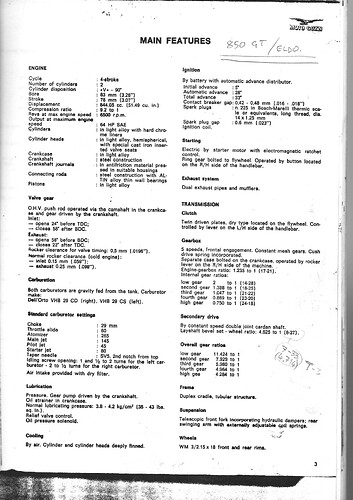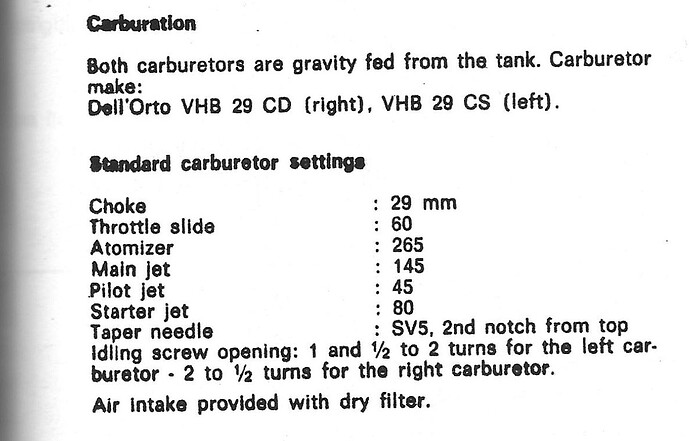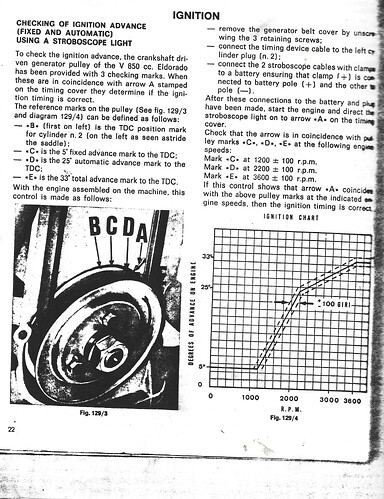One cylinder not firing at idle isn’t always due to anything too complex on the original V7.
Over a few years I have experienced this for various reasons and invariably it turned out to be something fundamental. examples are below. Not trying to teach grandmother to suck eggs or anything, just listing various reasons (and cures) I have experienced, this a summary of the same problem at different times:
Carburation, e.g. after a period of non-use. I realize you cleaned / soretd the carbs though so this info. is probably not needed:
I experienced one cylinder not firing (until revving) a couple of times due to a slightly leaking choke-valve (on VHB 29 etc.). The rubber choke-piston face gets compressed over time - sometimes the choke cables can be slightly too short to accomodate flattenting of the rubber face on the valve so the choke piston is effectively lifted (albeit very slightly). If this happens, it will miss on one or other cylinder at idle. Quick sanity-check, back-off the choke-cable adjuster ensuring there is about 1/8" - 3mm free play - But, check tension / free-play of the cable at each carb as well as at the choke-lever on the bars. A problem in the cable-splitter was causing one choke to remain slightly open even with free play at the choke-lever.
Carb balancing - I set-up a U-Tube manometer connected to the inlet manifolds (nice visible green 2-stroke oil in the u-tube) and found VHB’s more sensitive than expected to very small adjustments at idle. A fair bit of difference on settings between L / R carbs to achieve balance. Patience here made a big difference to smooth firing at idle and on picking-up the revs.
Ignition problems - which you are now concentrating on:
The V7 single-points and coil makes static-timing easy to set-up.
For fine tuning I also use a strobe but my experience is: once the timing is set-up and the bike runs well, don’t adjust anything - if a problem happens adjusting can cover-up the problem and not find the root cause.
Reading what you have done - the timing is OK. Double check the obvious: Cam (any sideays play?), the points-gap and that points-contacts really are clean - no grease or oil on them at all (but a tiny bit of lube on the cam / points heel).
You are replacing the distr. cap, I did this and found the original cap is in fact still 100% OK. Same with rotor-arm, slightly burned, it cleaned off but replacement made no difference.
Plugs: Simply put a fresh set of plugs in. I had a low miles NGK plug give exactly this problem - it would not fire at idle - only with revving over approx. 1500 rpm. New plugs - problem cured immediately. No explanation at all. It has happened to me twice with NGK’s now.
Plug caps: - check or simply replace if they are old - especially if original nice looking Bosch resistor caps. I spent way too long chasing this problem and eventually went back to basics - tested the metal plug caps with a meter and found one of them was not OK. New NGK non-resistor plug caps solved the problem immediately.
HT leads: can also give problems. I replaced them all, with new ends, simply to eliminate them as a source of potential trouble.
I hope you find some sense in all this - perhaps it’ll be easily resolved.
Giles


